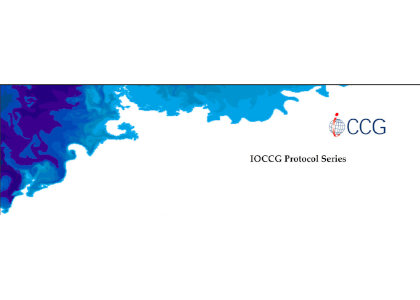Final versions of two new IOCCG Ocean Optics and Biogeochemistry Protocols are now available on the IOCCG website:
Volume 3.0: “Protocols for Satellite Ocean Color Data Validation: In situ Optical Radiometry”. This document provides protocols for the collection, processing and quality assurance of in situ measurements of the apparent optical properties of natural water for the validation of satellite radiometric products. It includes radiometer specifications, calibration and characterization of radiometers as well as in-water/above water radiometry measurements and data analysis.
Volume 4.0: Inherent Optical Property Measurements and Protocols: Best Practices for the Collection and Processing of Ship-Based Underway Flow-Through Optical Data . This document provides standardized methodology for the collection, processing and quality assurance of optical data collected using the flow-through systems installed on research vessels and ships of opportunity.
In addition to these volumes, two new draft versions of protocols are also available for community review. We need your input – community feedback is essential to ensure that these protocols are accepted as the new international reference standards, and are adhered to by the entire ocean colour community!
Volume 5.0 (draft): “Measurement Protocol of Absorption by Chromophoric Dissolved Organic Matter (CDOM) and Other Dissolved Materials“ – available for community feedback. This document describes procedures for making CDOM absorption measurements that can be integrated into bio-optical databases, specifically of sufficient quality to develop and validate ocean colour algorithms/products. Please send your comments to cdom_comments@oceancolor.gsfc.nasa.gov before the deadline of 22 December 2019.
Volume 6.0 (draft): Particulate Organic Carbon Sampling and Measurement Protocols: Consensus Towards Future Ocean Color Missions – available for community feedback. This document provides state-of-the-art technologies and protocols for sample collection, filtration, storage, analysis, and quality assurance for marine particulate organic carbon, appropriate for satellite algorithm development and validation. Please send comments to poc_comments@oceancolor.gsfc.nasa.gov before the deadline of 20 January 2020.





